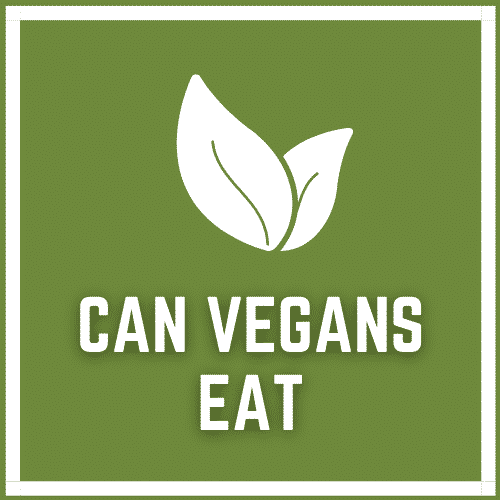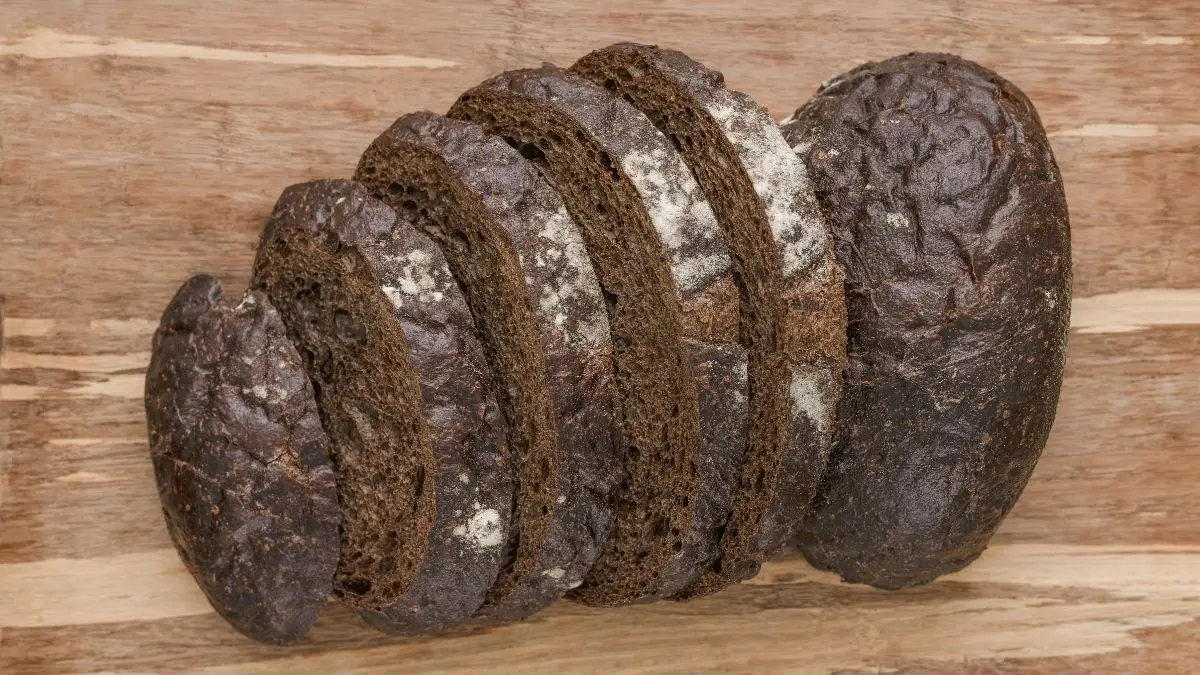Answer: Yes.

Do you love pumpernickel bread? Well, you’ve got company.
Pumpernickel bread has long been one of the favorites in bakeries and delis. The slightly heavy, lightly sweet rye is an excellent bread to go with your meals or as a meal on its own. The molasses used in the baking method is what gives it that wonderful touch of sweetness.
Pumpernickel bread is excellent for making sandwiches. It’s a great bread to pair with various string cheese, meats, sauerkraut, and other condiments. Pumpernickel bread is best to serve with soups, chili, and other meals as a side.
Table of Contents
What Makes Pumpernickel Bread Vegan?
The recipe for pumpernickel is very basic and doesn’t contain any dairy or animal products. The only portion where fat is required, margarine, is used as a fat substitute. Since this bread recipe doesn’t contain any animal products, it’s safe to say that pumpernickel is vegan-friendly.
The basic ingredients you need to make pumpernickel bread are water, rye, flour, and yeast. You would also need some salt and sugar. You can choose the very best of these ingredients without having to worry about whether they are vegan or not. All the components required are plant-based.
How Do You Make Pumpernickel Bread?
Making pumpernickel bread is similar to most other bread recipes. If you’ve got the hang of making one kind of bread, it won’t be too difficult to get used to making a nice warm loaf of tasty pumpernickel bread before your next meal.
First, get all your dry ingredients and wet ingredients separated and organized. Dissolve the yeast in warm water that is in a large bowl. Keep stirring until it’s completely dissolved in the water. There should be no lumps in the mixture. Into this mixture to the molasses, salt, rye, shortening, and caraway seed.
To this mixture, add 2 cups of bread flour. The flour must be added until the mixture turns into a dough that has a consistency that allows you to knead it. It may not be that you need the complete quantity of bread flour. This could depend on the weather conditions and the ingredients that you choose.
At this stage, begin to knead the flour. If it gets sticky, then it means that it requires more bread flour to be added to it. To make it less sticky, adding bread flour one tablespoon at a time is better. It is essential to do it bit by bit, as adding a whole lot of flour at once will ruin the dough.
Put the dough in a bowl that has been greased. Give it a flip so that both sides get greased. Cover this bowl using plastic wrap or a towel and let the dough rise. It has to be in a warm area where there is no wind to disturb it. Wait until the dough has become double its size after rising.
Get to punching now. Take out all your frustrations on that dough. Give it a good punch, and then cover it. Once you have kept the dough in its bowl and covered it with a towel or plastic wrap, let the dough rise once more – this time for 45 minutes.
Punch the dough once again and then lay it out on a board that has been floured beforehand. The floured board will help you make sure that it is easy to knead the bread. The flour ensures that the dough doesn’t stick to the board while kneading it.
Get a baking sheet and sprinkle it generously with cornmeal. This is where you have to cut the dough. Cut into sizes that you want. Place the cut loaves into a baking sheet. Once again, cover the dough. Let it rise again for another 45 minutes.
Preheat the oven to 375 F. Give the bread 35 minutes to bake properly.
You can serve the bread as you want. You can use it to make superior sandwiches, just a nice, light toast with jam. It also goes excellently as a side dish with any of the dishes you choose to pair it with.
What Goes Into Making Pumpernickel Bread?
So is pumpernickel bread vegan? Yes, it is. All the basic ingredients that you need to make pumpernickel bread are vegan. Always check the elements when you buy pumpernickel bread from outside. There might be milk solids or other non-vegan ingredients.
Fats
When it comes to the fat required, shortening is used in this recipe. Shortening is a vegetable oil or vegetable fat that comes as a solid. It helps to make sure that the bread is soft and crumbly. It helps to keep the bread from turning too hard and becoming like a rock.
Rising Agents
Ingredients like yeast and other leavening agents are added to the dough so that it can rise properly. Yeast comes in two states, liquid state and powder form. Dry yeast is a better option because it has a longer life and doesn’t get spoiled at room temperature early.
Leavening agents serve the same purpose as fermenting yeast. This helps to ensure that the bread is rising correctly and helps make sure that it bakes properly. None of these agents have any effect on the final taste of the Pumpernickel bread.
You can use sodium or ammonium bicarbonate as chemical substitutes for leavening agents. You can do without these. Leaving a mixture of wheat flour and water out for s while does the job well. This mixture will use the spores in the air for the process.
Other Ingredients
Water, salt, sugar, and other such common ingredients make up the rest of the recipe. Once the yeast and sugar get in contact, fermentation begins.
The only thing you need to keep in mind is the inclusion of any extra or additional fats. If you choose to buy your pumpernickel bread from outside, make sure that it doesn’t contain any butter, dairy, or other animal fats.
How Do You Eat Pumpernickel Bread?
Pumpernickel bread comes in two basic types. Pumpernickel bread is said to have originated in Germany. It has since been adopted into American culture. There are two main kinds of bread: Westphalian pumpernickel from Germany and the Jewish American type.
Pumpernickel bread has now become a staple in American holiday spreads. Thanksgiving and Christmas are two of the celebrations where you can definitely find pumpernickel bread. It has become one of the most commonly consumed kinds of bread.
Pumpernickel bread is fantastic bread for sandwiches. You can make some genuinely memorable sandwiched between two slices of pumpernickel bread. Be it meats, cheeses, or vegetables, pumpernickel bread can hold them very well. It adds a pleasant, slightly sweet taste to the sandwich.
Pumpernickel is also a great side to a meal. If you’ve got a nice hot bowl of chili or a nice warm soup, you’ve got to have a slice of pumpernickel bread with it. It’s an excellent pairing for almost all kinds of food.
You can use them to make small plate appetizers. Cut the bread into small pieces, and top them with some cream cheese, some fresh vegetables, and proteins. You can use it to make a lovely fragrant bruschetta brushed with olive oil.
Another thing about pumpernickel bread is that it’s an extremely tasty bread on its own. Most of the bread that you see is very plain-tasting and doesn’t have too much of a flavor on its own. The molasses that you add to the dough give it a nice tinge of sweetness on its own.
In Conclusion
Pumpernickel bread is a favorite among bread aficionados. It’s a very complex bread that is very easy to make. The process is simple, but if you do it right, you’ll have your guests gushing over how good your bread-baking skills are.
It’s one of the most versatile kinds of bread. Once you bake a loaf of pumpernickel, your options are endless. The number of dishes you could use to make it and the various dishes you can use as a side are numerous. It’s a very kitchen-friendly bread.
What’s more? All the essential ingredients are plant-based and don’t contain any animal proteins or products. The only thing that you would have to watch out for is animal fat in store-bought pumpernickel bread.

